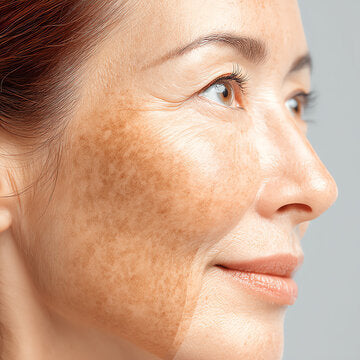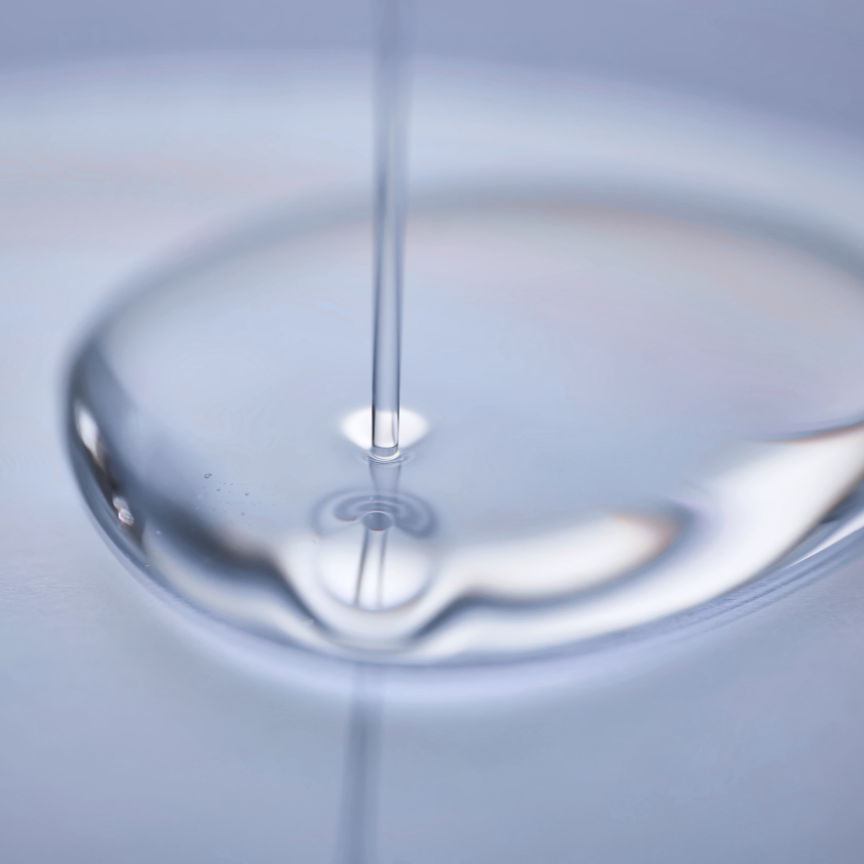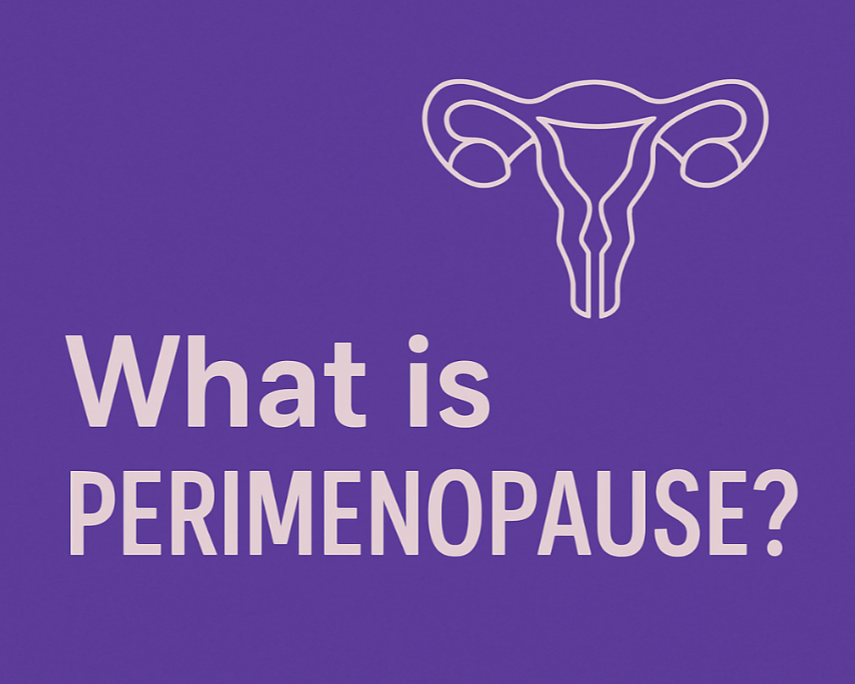Perimenopause is the natural transition leading up to menopause. While menopause is defined as 12 months without a period, perimenopause often begins years earlier - and it can bring a range of physical and emotional changes.
Every woman’s experience is unique. Recognizing the early signs of perimenopause helps you understand what’s happening in your body and navigate this time with clarity, confidence, and self-compassion.
Irregular Periods in Perimenopause
One of the first signs of perimenopause is a change in menstrual cycles. Periods might come closer together or further apart, last longer or shorter, and vary in flow. These shifts happen because estrogen and progesterone levels - the hormones that regulate your cycle - begin to fluctuate.
While these irregularities can be surprising, they’re completely normal and signal that your body is beginning this natural transition.
Perimenopause Hot Flashes and Night Sweats
Sudden waves of heat, often across the face, neck, or chest, followed by sweating, are classic signs of perimenopause. At night, these sensations can wake you as night sweats.
These symptoms occur when hormonal changes affect the hypothalamus - the part of the brain that regulates body temperature. While uncomfortable, hot flashes are among the most common and well-documented experiences of this phase.
Perimenopause Sleep Problems
Trouble falling or staying asleep can become more frequent during perimenopause. Declining progesterone levels and night sweats can disrupt your natural sleep cycle.
Over time, this lack of deep rest can lead to fatigue, irritability, and low concentration. Understanding the hormonal connection can help you make small adjustments - like improving sleep hygiene or practicing relaxation before bed - to regain more restorative rest.
Perimenopause Mood Swings and Mental Health
Hormonal changes can affect mood-regulating neurotransmitters in the brain. This is why irritability, anxiety, or sadness may appear more often or feel more intense. Research shows that estrogen influences serotonin and dopamine activity, both of which play a role in emotional stability.
Knowing that these mood shifts are part of perimenopause can help you approach them with understanding rather than frustration.
Perimenopause Brain Fog
Many women describe moments of forgetfulness, difficulty concentrating, or “losing their train of thought.” This brain fog often arises from fluctuating hormones and interrupted sleep.
Though disorienting, it’s typically temporary. Supporting brain health with balanced nutrition, exercise, and adequate rest can improve focus and cognitive clarity.
Perimenopause Low Sex Drive and Libido Changes
Sex drive may shift during perimenopause - sometimes decreasing, sometimes increasing. These changes are influenced by hormones, stress, and emotional well-being.
Understanding that libido changes are normal can reduce unnecessary worry or guilt. Open communication and self-awareness help maintain connection and intimacy during this stage.
Perimenopause Vaginal Dryness and Urinary Changes
As estrogen levels drop, the vaginal lining becomes thinner and less lubricated, leading to vaginal dryness and discomfort. Some women may also experience increased urinary frequency or irritation due to changes in the urogenital tissues.
These symptoms are common and manageable. Hydration, gentle care, and, when needed, topical estrogen or supportive moisturizers can restore comfort and confidence.
The Takeaway on Early Signs of Perimenopause
Perimenopause isn’t an ending - it’s a transformation. Recognizing the signs helps you approach this stage with knowledge and grace rather than confusion or fear.
With the right care, stress management, and communication with your healthcare provider, you can support your mind and body through this transition.
At Sum of All, we believe this season of life deserves understanding, respect, and products created to support hormonally evolving skin. Explore our range at www.sumofall.com/store.
Sources
-
Reed, S. D., et al. (2022). Perimenopausal transition and hormone fluctuations: Current insights. Obstetrics & Gynecology Clinics of North America. https://pubmed.ncbi.nlm.nih.gov/35730702/
-
Santoro, N., et al. (2021). Menstrual irregularity and hormonal transitions in midlife women. Menopause. https://pubmed.ncbi.nlm.nih.gov/34480971/
-
Tobin, D. J. (2017). Introduction to skin aging and hormone function. Journal of Tissue Viability. https://pubmed.ncbi.nlm.nih.gov/31040602/
-
Randolph, J. F., et al. (2017). Vasomotor symptoms and temperature regulation in perimenopause. Menopause. https://pubmed.ncbi.nlm.nih.gov/28499073/
-
Freeman, E. W., et al. (2023). Hot flashes: Mechanisms, impact, and management. Journal of Women’s Health. https://pubmed.ncbi.nlm.nih.gov/37288338/
-
Shaver, J. L., & Woods, N. F. (2017). Sleep and hormonal transitions in women. Sleep Medicine Reviews. https://pubmed.ncbi.nlm.nih.gov/28522021/
-
Dubol, M., et al. (2021). Estrogen modulation of serotonin pathways in mood regulation. Frontiers in Neuroendocrinology. https://pubmed.ncbi.nlm.nih.gov/34553269/
-
Weber, M. T., et al. (2021). Cognitive changes in perimenopausal women: Understanding brain fog. Menopause. https://pubmed.ncbi.nlm.nih.gov/33907093/
-
Henderson, V. W. (2021). Exercise, cognition, and menopause. Journal of Neuroendocrinology. https://pubmed.ncbi.nlm.nih.gov/33483369/
-
Kingsberg, S. A., et al. (2018). Sexual function changes during the menopause transition. Climacteric. https://pubmed.ncbi.nlm.nih.gov/30239708/
-
Parish, S. J., et al. (2020). Vulvovaginal atrophy and urinary symptoms in menopause. Menopause. https://pubmed.ncbi.nlm.nih.gov/33086303/
- Farrell, S. A., et al. (2018). Urogenital changes and estrogen deficiency. Canadian Journal of Urology. https://pubmed.ncbi.nlm.nih.gov/29454090/
Read more

Once you reach your mid-40s, your skin begins to tell its story. It has endured sun exposure, hormonal shifts, late nights, stress, and the many transitions of life - yet it continues to protect an...

For far too long, menopause has been shrouded in silence, a topic seldom discussed openly - whether at work, over dinner, or even among friends. But keeping quiet has done women a disservice. Menop...



















